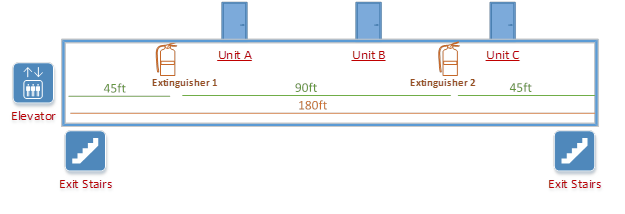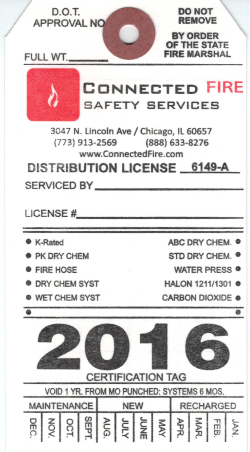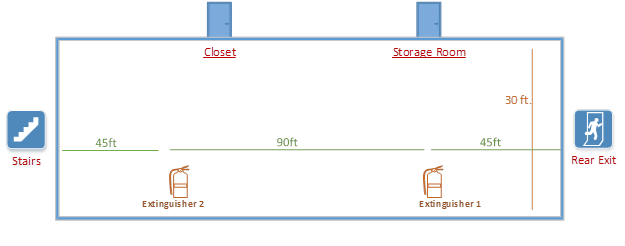Learn about
Chicago fire extinguisher maintenance
Fire code dictates the number, size and type of fire extinguishers required within a building. The location of the extinguishers throughout the property and the method of installation are also governed by code.
The servicing cannot be performed by a board member, property owner or resident unless they are licensed by the City of Chicago and the State of Illinois.
Understanding the
Type of extinguishers required
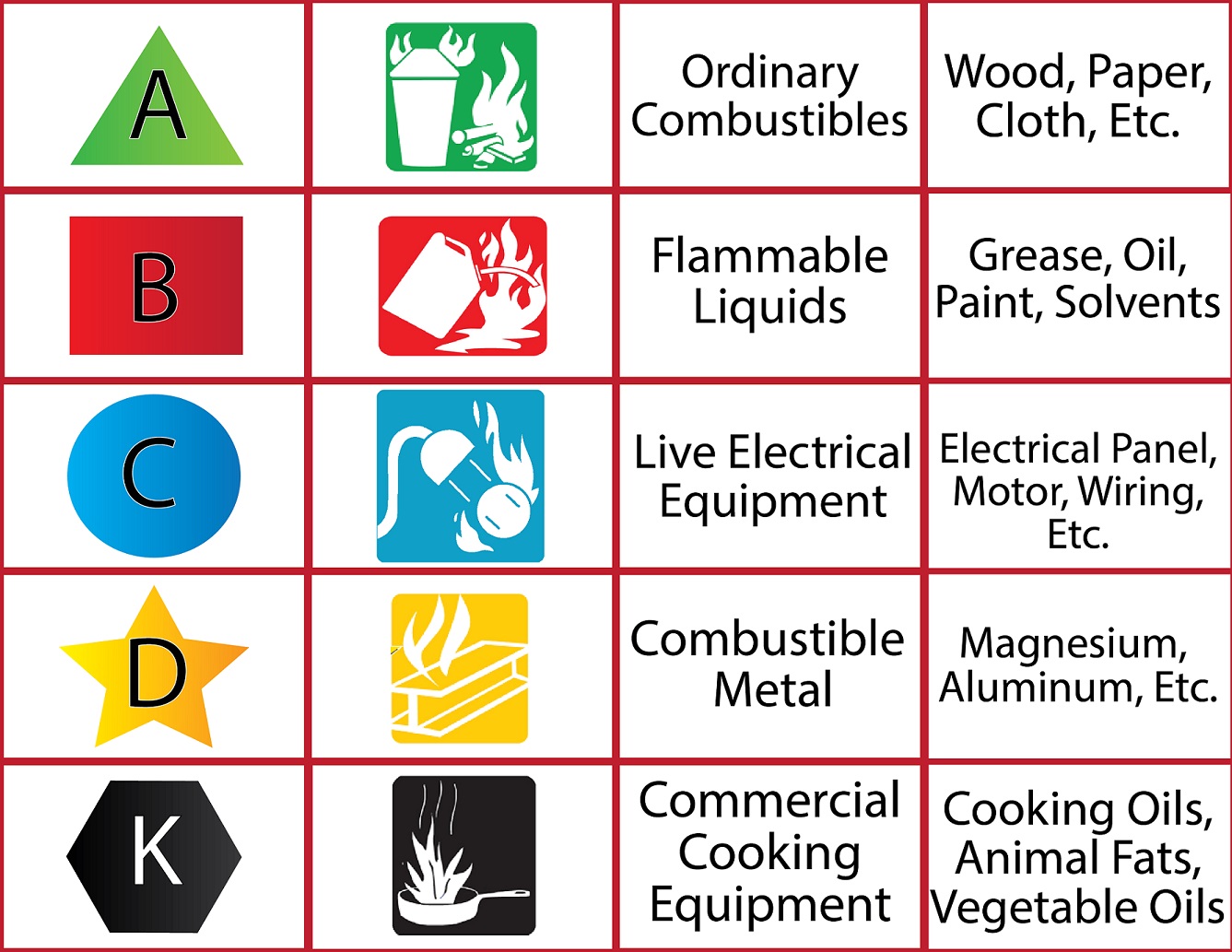
The type of extinguisher required by code to protect an area of the building is primarily based upon the class of fire that the unit is meant to eliminate. For example, there are fire extinguishers designed to fight grease fires that are required within commercial kitchens.
Fire extinguishers also differ based upon the type of "extinguishing agent" that is expelled from the unit to fight a fire. Examples of agents used by extinguishers are water, CO2, foam, special gasses and powdered chemicals. Each type of extinguisher has its own set of servicing requirements and certification schedule that must be performed by law.
Fortunately, most commercial properties will only need a single type of fire extinguisher throughout the building. Protection is provided by dry chemical fire extinguishers, which expel a fine yellow powder that smothers fires. Dry chemical fire extinguishers are the most common type of extinguisher and are used in schools, offices, hospitals and homes.
Maintenance & Certification
Requirements
We track and monitor the required service dates for our clients' fire extinguishers. When servicing is due, we pro-actively contact the client to schedule a convenient time for our technician to visit the property and perform the required servicing.
(Click any of the topics to the right to view more details.)
Portable fire extinguishers must be inspected and certified on an annual basis. Annual service is intended to give maximum assurance that the extinguisher will operate safely and effectively. When due, our technician will perform a 10-point maintenance check on each of your building's extinguishers. This process includes:
- Visual Examination: performed on the entire unit, carefully inspecting for dents, rust, corrosion, pitting or other shell damage.
- Test/Maintenance History: reviewed to determine the need for recharge, internal maintenance or hydrostatic testing.
- Pressure Gauge: checked to ensure that the unit is fully pressurized.
- Weight: the extinguisher is checked to ensure the correct amount of extinguishing agent is in cylinder.
- Discharge Hose: removed to inspect for signs of blockage or damage.
- Locking Pin: removed to ensure that the pin is easily removed in the event of an actual fire emergency
- Handle/Lever: checked for smooth discharge operation.
- Clean Extinguisher: using a cleaning solution.
- Mounting Bracket: checked to ensure extinguisher is installed securely on correct mounting hook or bracket.
- Inspection Certification: documented by attaching a safety tag identifying the service technician having performed the service.
- Compliance Report: results recorded in the building's compliance report and uploaded to the Fire Safety Portal.
Determining the
Number, Size and Location of Fire Extinguishers Required
(Click any of the topics to below to view more details.)
In general, a condo building needs a minimum of one fire extinguisher on each floor of the building. This includes the first floor, or lobby floor, of the property. The number of extinguishers required on a specific floor is dependent on the length of the hallway or common area. The law requires that from any point on the floor, a person must be able to access a fire extinguisher in 75 feet or less.
Installation Example - Short hallway
Most floors require only a single extinguisher to provide the required level of protection. As shown in the example below, the extinguisher is installed next to the primary exit ways, and is within the 75 foot maximum travel distance from any point on the floor.

Installation Example - Mid-length hallway
In this example, the length of the hallway is 100ft, so the extinguisher cannot be installed next to the primary exit way. The extinguisher is installed in the middle of the hallway to ensure that the maximum travel distance to the extinguisher from any point within the hallway is less than 75 ft.
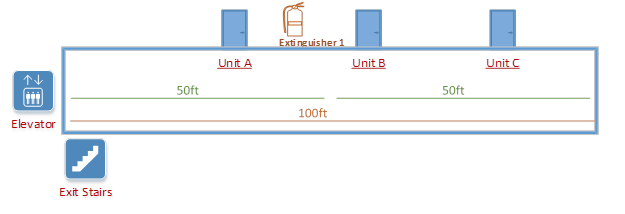
Installation Example - Long hallway
In the next example, the hallway is longer than 150 ft., requiring two extinguishers to be installed because a single extinguisher in the middle of the hallway would not meet the “75 foot maximum travel distance” rule. In this case, two extinguishers will be installed, an equal distance “inward”.
